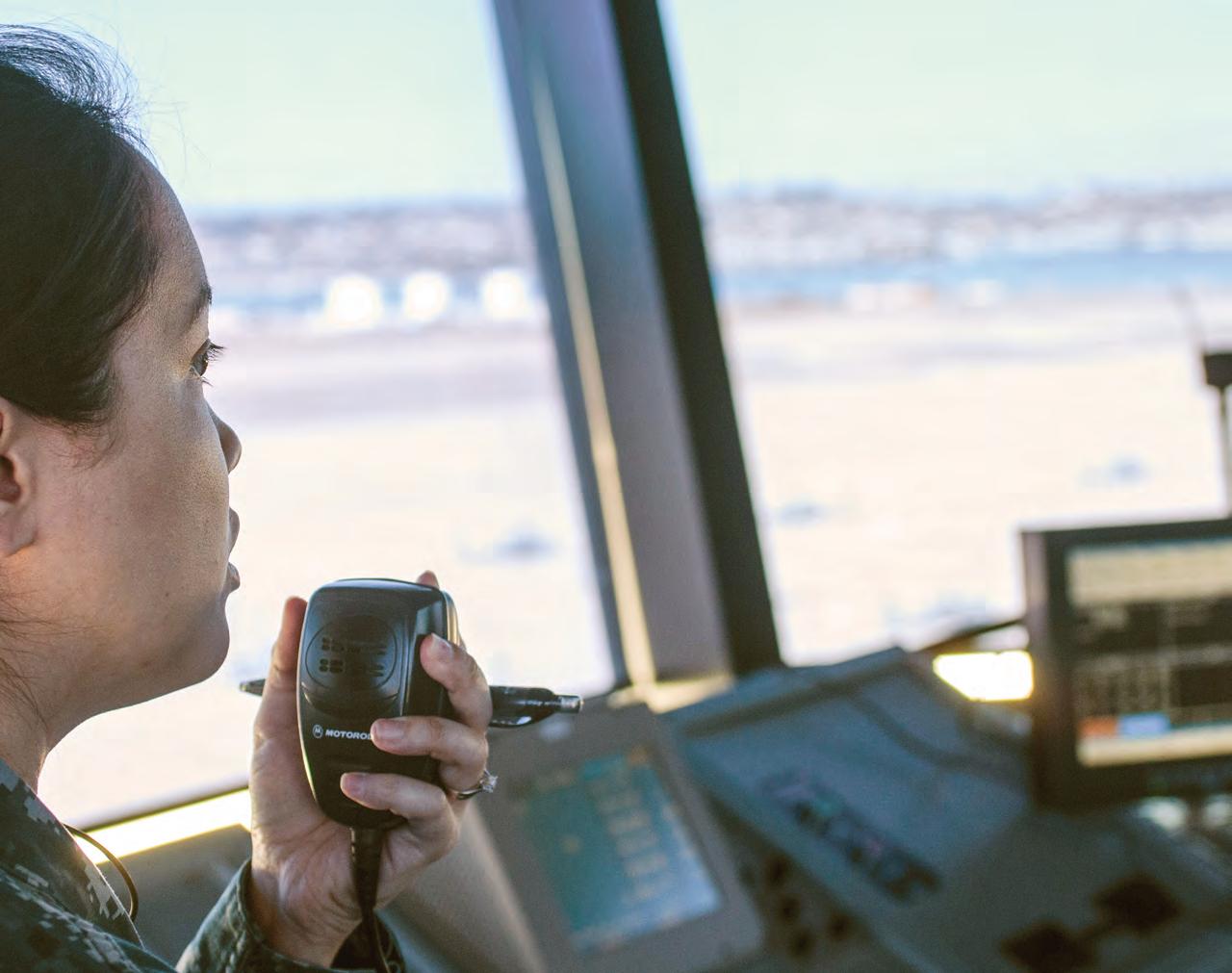
4 minute read
Fighting FOD in a Combat Environment
Fighting FOD
in a Combat Environment
BY LT JONATHAN LEE
arrier Air Wing 17 (CVW-17) deployed aboard USS Carl Vinson (CVN 70) on August 22, 2014. After a two-month transit that consisted of unit-level training (ULT) missions and Operation Valiant Shield, CVW-17 began daily combat operations in support of Operation Inherent Resolve. The daily operational tempo consisted of 75 sorties, encompassing combat sorties, ULT and organic tankers. While the operational tempo was consistent with a standard deployment, the rate of engine foreign object damage (FOD) removals was disproportionally high. Leadership suspected that traditional FOD prevention measures were proving insufficient. Unconventional mitigations would be required to minimize the risks associated with FOD.
That’s a lot of pockets, or so it may seem aboard the USS Carl Vinson. While pockets aren’t something one normally thinks of, it became a topic of discussion during one foreign object debris (FOD) council meeting when they noticed a rise in FOD. The result of the meeting was a decision to have all flight deck personnel sew their pockets shut to prevent FOD from accidentally dropping out of pockets. Each year FOD contributes to millions in repair costs. (Photo by MC2 James R. Evans)
In roughly six months of the deployment, CVW-17 mechs had to remove 13 engines because of FOD: three from VFA-22, three from VFA-94, one from VFA-81 and six from VFA-113. Our air wing averaged 2.17 FOD removals per month (the average for a deployed air wing is 0.87). These engine removals cost the VFA squadrons and USS Carl Vinson valuable resources. VFA-22, VFA-94, VFA-81 and VFA-113 combined to incur a cost of $13 million to repair or replace these engines. In addition to the monetary loss, these engine removals and repairs imposed 2,728.4 man-hours of work on the squadrons and Aircraft Intermediate Maintenance Department (AIMD). The loss of man-hours was detrimental to operational squadrons. Rather than focusing on the maintenance of fully mission capable (FMC) jets, squadrons were replacing and rebuilding engines to simply get airborne.
Only two of the 13 removals had an identified cause. One engine was removed after ingesting a blown tire during a recovery. Another was removed due to the ingestion of an in-flight-refueling (IFR) probe. The remaining eleven events were caused by unknown sources.


CVW-17 and CVN 70 leadership imposed a proactive plan that resulted in a drastic reduction of engine FOD removals. The first step was establishing a quarterly FOD council, comprised of both CVW-17 and CVN 70 leadership and focused on methods to eliminate the challenge of detecting foreign debris. When the first council convened, engines were being removed at a rate of three per month. After innovative control measure were put in place, the removals decreased to a rate of 1.33 engines per month.
The quarterly council initially summarized and revealed photos of the type of FOD discovered during the previous three months. Once the main sources of FOD were localized, the FOD council brainstormed new control measures to eradicate the threat. After the first meeting of the FOD Council, all flight deck personnel were required to sew their pockets closed. In addition, both CVW-17 and CVN 70 personnel were required to inventory all personal protective equipment (PPE), including cranials, float coats and auto-inflator assemblies. Any infraction resulted in the engagement of the chain of command and, most importantly, a forced exit from the flight deck. The most unconventional proposal was the implementation of a nightly FOD walk-down. It is hard to find small pieces of FOD at night, but larger items were periodically discovered: several wrenches, CO2 cartridges and an entire float coat auto-inflator assembly. Prior to the night FOD walk-down, these items would have threatened the air wing assets until the following morning.
Each of these control measures decreased the amount of FOD present during flight operations. Collectively, they increased FOD awareness for all personnel on board. In order to truly combat FOD, each person must understand the importance of by-the-book maintenance. The efforts made by CVW-17/CVN 70 chains of command instituted a policy that created that climate. FOD prevention became a priority and the diminished amount of engine FOD removals directly illustrates an increase in FOD awareness.
Through unconventional control measures, leadership directly addressed the challenges of FOD and drastically reduced the number of engine removals caused by FOD. While potential methods for improvement remain, these non-traditional ideas provided a solution and allowed our aircraft to successfully support Operation Inherent Resolve.
LT LEE FLIES WITH VFA-22.
An aviator’s line of work almost guarantees that he or she will encounter stress. Most of the time, they’ll be able to handle it sufficiently. If you find that you’ve hit a particularly rough patch, take advantage of your options. Seeing your flight surgeon when personal issues are closing in is a great step in the right direction.











